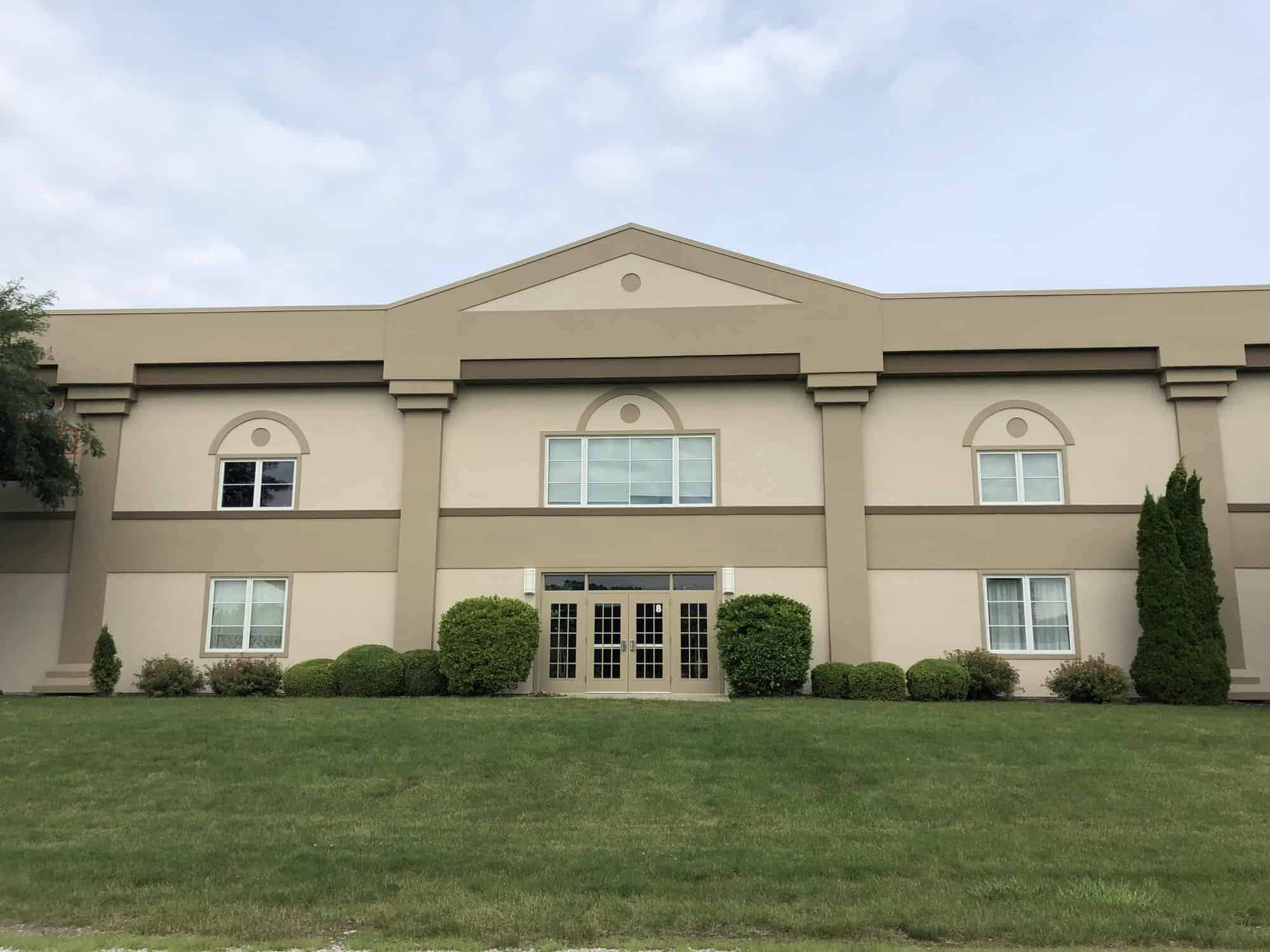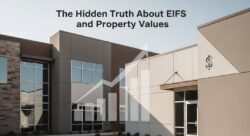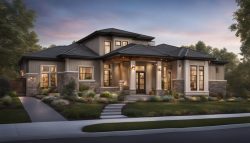Building the Future: Your Guide to the Unbeatable Benefits of EIFS Stucco
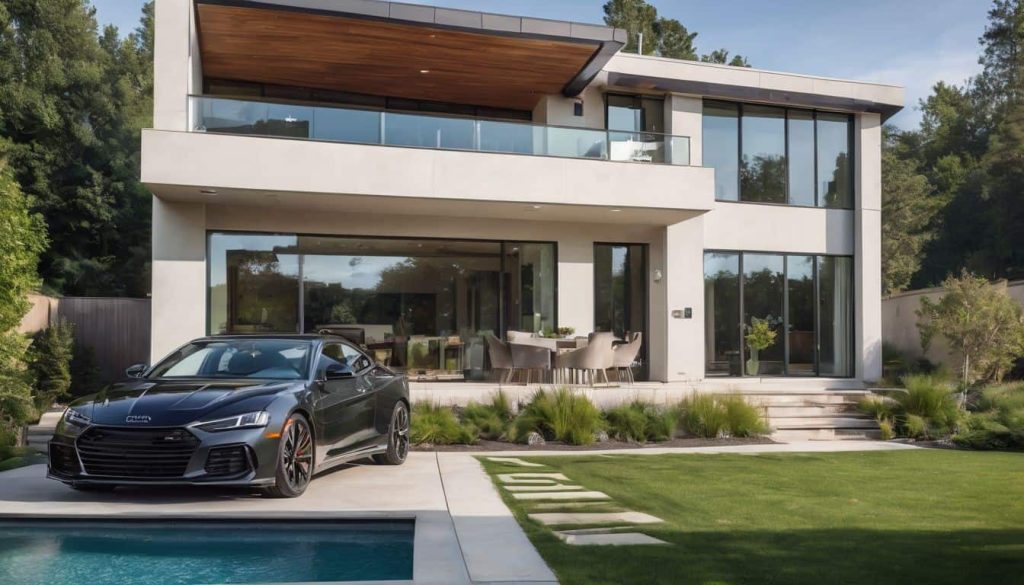
Deciding on the best type of exterior finish for your home is no small task. Known for its durability and energy efficiency, EIFS (Exterior Insulation Finishing Systems) Stucco has quickly become a popular choice among homeowners. This article will breakdown the reasons behind EIFS’s increasing popularity and how it stacks up against traditional stucco in terms of cost, maintenance, design versatility, and performance. Stay with us to unravel why EIFS might be just the right pick for your needs!
Key Takeaways
- EIFS Stucco offers homeowners benefits like lower maintenance and improved crack resistance.
- It is more flexible than traditional stucco, making it less likely to get damaged.
- With built – in insulation, EIFS Stucco helps keep homes warm in winter and cool during summer months.
- Choosing EIFS may increase the home’s resale value thanks to its durability and aesthetic appeal.
Brief History of EIFS Stucco
The origin of EIFS Stucco goes back to the 1970s as an innovative solution for insulation and finishing system. However, its reputation was tarnished in the United States due to instances of poor installations during that decade and the next.
This led to numerous issues related to mold, damage to frame exteriors, and even pest infestations resulting from improperly installed EIFS. Efforts were made in rectifying these problems with a significant overhaul of installation standards after 1999 which resulted in better quality applications vastly improving its market appeal.
It’s crucial for prospective buyers or homeowners interested in homes built before 1999 with EIFS stucco applied, to hire inspectors certified specifically in assessing this type of cladding.
They are equipped accurately identify any potential aberrations interpreted as warning signs pertaining damage directly linked with this specific exterior finish.
While newer improvements have enhanced its durability and energy efficiency making it popular among certain homeowner groups today, traditional stucco still holds dominance when considering cost-effectiveness on installation aspect.
Purpose of the Article
The purpose of this article is to deeply explore EIFS stucco, a popular home exterior option. It will break down what EIFS stucco consists of, how it compares to traditional stucco and the primary reasons homeowners are inclined towards choosing it for their houses.
We will also examine potential disadvantages associated with incorrect installation practices. This comprehensive view can help you understand why EIF’s notable features such as improved crack resistance and enhanced energy efficiency make it an excellent consideration when deciding on the best cladding for your home’s exterior.
Understanding EIFS Stucco
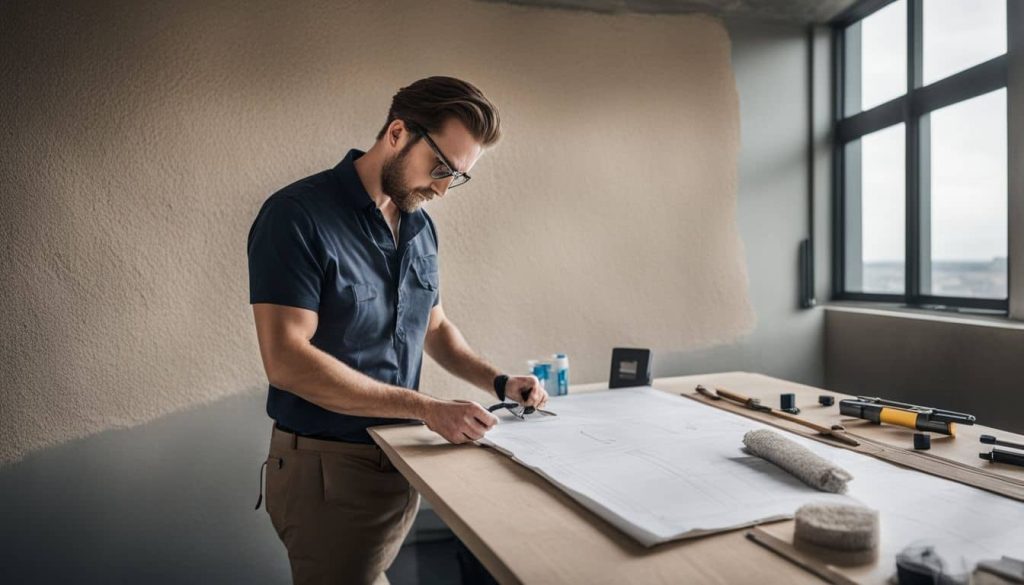
EIFS Stucco, short for Exterior Insulation and Finish System, is a unique blend of materials used to create a durable and flexible exterior finish. This blog section breaks down this compound’s components and highlights its everyday applications – an essential read for homeowners considering EIFS stucco as their home siding option.
Composition and Materials
EIFS stucco consists of three distinct layers. The first layer, or the insulation board, is made from expanded polystyrene foam that attaches directly to the exterior surface of a home.
This synthetic material provides excellent insulation and contributes significantly to energy efficiency in homes.
The second component comprises a base coat applied over the insulation board and reinforced with fiberglass mesh for additional strength and impact resistance. This tandem creates an effective barrier against varying weather conditions while ensuring longevity for your home’s finish.
The final layer is the finish coat, which is also composed of synthetic materials available in various textures and colors enhancing design versatility for homeowners. It gives EIFS its visual appeal while also adding another level of protection against external elements such as sunlight, rain, wind-blown debris etc., protecting your home from possible water damage that could result from ineffective cladding materials.
Common Applications
EIFS is a popular choice for homeowners living in arid and desert regions because of its superior insulation properties. It effectively keeps homes cool even under intense heat, reducing the need for air conditioning.
Furthermore, it’s common to see EIFS on homes built after 1999 because installation standards dramatically improved during this period. Patty Kucko from Gemstone Homes says “‘It provides multifaceted benefits like aesthetic appeal and robust energy efficiency that make it an excellent choice for many residents.” Notably, family residences are not the only applications; commercial buildings also benefit from EIFS due to its design flexibility, cost-effectiveness and long-term durability.
Comparing EIFS Stucco and Traditional Stucco
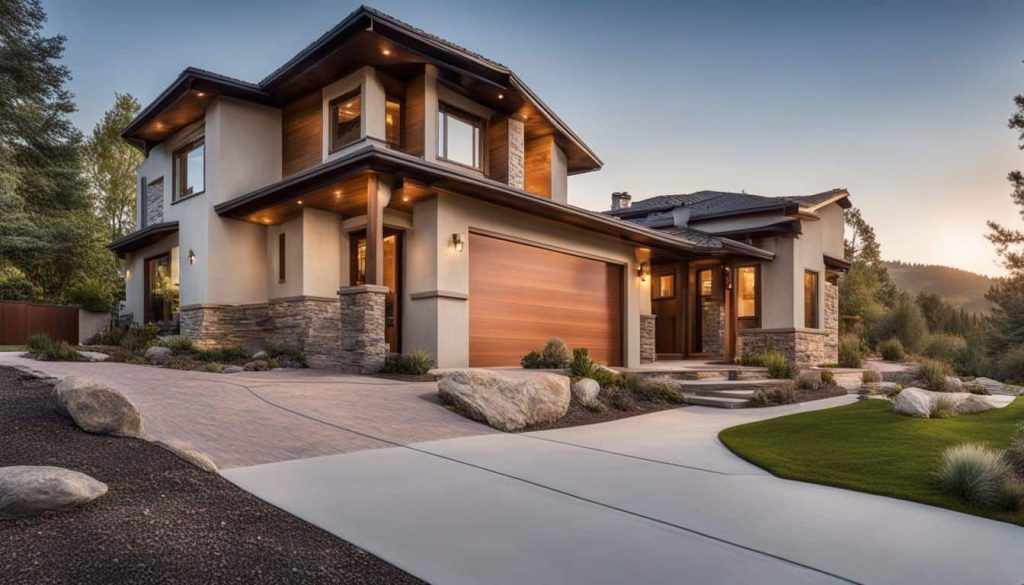
Discover how EIFS Stucco stands apart from Traditional Stucco in terms of appearance, durability, installation process and costs – crucial factors for informed decision making. Dive deeper to find out which kind best suits your requirements.
Appearance
The stark dissimilarities between EIFS stucco and traditional stucco become significantly noticeable in their appearance. Traditional stucco boasts a coarse, textured look because it’s made of natural materials like cement, sand, lime, and water.
Over the years this well-loved siding has predominantly been associated with Mediterranean or Spanish style houses.
Conversely, EIFS stucco portrays a sleeker impression due to its synthetic makeup. It also serves up unmatched design versatility giving homeowners more room for creativity when designing their home exteriors.
From earthy tones to vibrant hues, EIFS comes in a diverse range of colors which can easily be molded into any shape or style without needing specialized tools or laborious techniques that other claddings might require.
Durability
EIFS provides excellent durability, holding up remarkably well against various elements. This superior resilience stems from its innovative composition and materials, which resist impact, moisture, and even fire when installed following the right standards.
Unlike traditional stucco that tends to crack under extreme weather conditions or thermal expansion, EIFS maintains a flexible structure. Therefore, homes with properly applied EIFS present less risk of damage over time compared to those featuring traditional stucco exteriors.
Consequently, many homeowners value this long-lasting robustness in their decision to choose EIFS over conventional alternatives.
Installation process
The installation process of EIFS stucco takes a thorough understanding and expert handling due to its complexity.
- It begins with the application of a water – resistant barrier over the exterior surface of your home.
- Then, installers secure sheets of insulation board to your home’s exterior using synthetic materials.
- A base coat is then spread on top consisting of cement and fiberglass mesh ensuring durability.
- After applying the base coat, it is left to cure before moving to the final stage.
- The final stage consists of adhering the finish coat which can be customized according to homeowners’ design preferences.
Cost Differences
Comparing cost differences between EIFS Stucco and traditional stucco is essential for homeowners to make an informed decision. Below is a cost comparison presented in a detailed table:
| Cost Component | EIFS Stucco | Traditional Stucco |
|---|---|---|
| Installation | Generally more expensive due to the complex installation process and materials required. | Usually cheaper to install as it requires fewer materials and simpler process. |
| Repair | Higher costs can be incurred for repairs due to the challenging process of fixing underlying issues. | Typically, repair costs are lower, but this can vary depending on the extent of the damage. |
| Overall cost | Though the initial cost may be higher, EIFS Stucco can result in long-term savings due to its enhanced energy efficiency and lower maintenance requirements. | While traditional stucco may be cheaper up front, it may require more upkeep and potentially higher energy costs over time. |
It’s important for homeowners to consider these cost differences, alongside their project requirements and environmental factors, when deciding between EIFS Stucco and traditional stucco.
Top Reasons Homeowners Choose EIFS Stucco
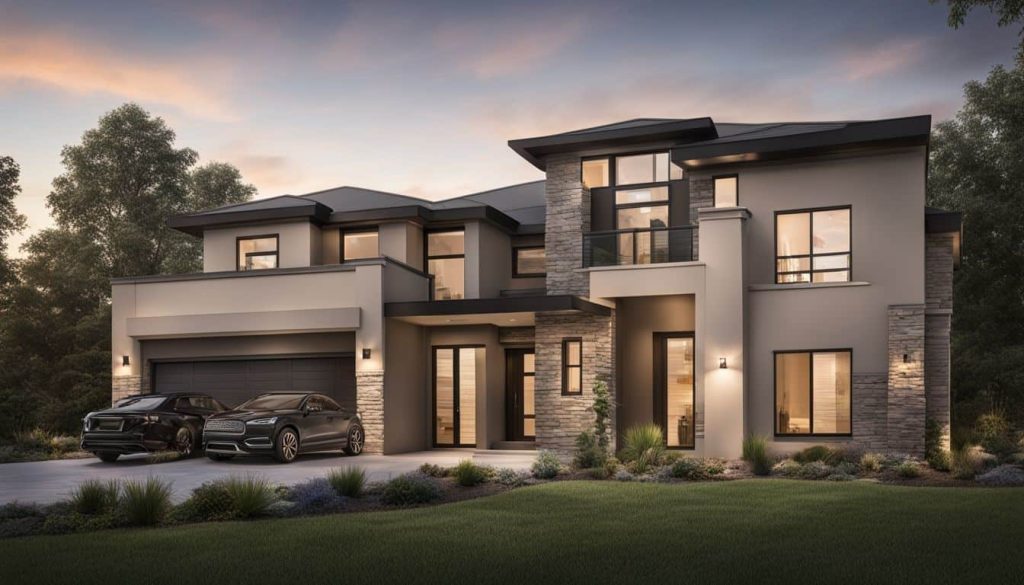
Many homeowners opt for EIFS stucco due to its improved crack resistance, bringing longevity and resilience. With lower maintenance requirements than traditional stucco, this housing solution frees up valuable time and money.
One of the most touted benefits of EIFS stucco is enhanced energy efficiency – it helps insulate the home better leading to reduced heating and cooling costs. The versatility in design offered by EIFS Stucco is unparalleled; you can achieve any look from sleek modern minimalism to rustic charm.
Lastly, opting for EIFS Stucco potentially increases your property’s resale value making it a sound long-term investment for savvy homeowners.
Improved crack resistance
EIFS Stucco significantly reduces the chance of exterior cracks in your home. This is primarily due to its superb flexibility which allows it to withstand minor structural movements that would typically cause traditional stucco to crack.
Its superior durability makes EIFS a top-rated option for homeowners looking for long-lasting, maintenance-free siding solutions. Unlike cement-based coatings such as conventional stucco, EIFS retains its form amidst various weather conditions and temperature fluctuations making it the preferred choice cladding option.
Therefore, homes with EIFS offer an immaculate appearance free from unsightly cracks while providing more protection from water leaks or damage when properly installed.
Lower maintenance requirements
EIFS stucco stands out as a popular choice for homeowners because of its lower maintenance requirements. This type of siding experiences less cracking and damage than traditional stucco due to minor structural movements, which are common in homes.
Visually inspecting the surfaces yearly and doing small repairs can help ensure it stays in good condition over time. As long as quality installation practices occur, EIFS will resist any unsightly weather wear or other types of aging that require costly upkeep and can have a longer lifespan with appropriate care.
With fewer concerns about deterioration from elements like wind or rain, your exterior walls will continue to look fresh year after year.
Enhanced energy efficiency
EIFS Stucco stands out as a popular choice for many homeowners due to its superb energy efficiency. The system’s unique design includes built-in insulation, which is known to significantly reduce heat transfer.
This keeps homes warmer in the winter and cooler during summer months without overworking your HVAC systems. As a result, you’ll not only save on heating and cooling costs but also contribute positively to environmental conservation efforts through reduced energy consumption.
Moreover, EIFS stucco is proven durable against harsh weather conditions, thus retaining its insulating capacities over long periods of usage. This means that your initial investment in EIFS Stucco will continue translating into consistent savings on utility bills in the long run while enhancing your home’s comfort levels year-round.
Versatility in design
EIFS stucco shines in its ability to adapt to various architectural styles and preferences. Its design versatility ranges from different textures, patterns, and finishes that cater uniquely to any homeowner’s plans.
Want a classic look or going for something modern? EIFS stucco makes it achievable effortlessly.
Another remarkable attribute of this stucco is its capability for transformation. Mimicking materials like brick, stone, or wood isn’t a challenge for EIFS stucco. This material creates an avenue for homeowners wishing to experiment with diverse designs without limitations.
Thus the selection of EIFS Stucco can generate excellent creative outcomes while adding value to any home exterior vision.
Increased property resale value
Installing EIFS stucco boosts the resale value of your home, making it an investment that pays off in real terms. Potential buyers often prioritize energy-efficient homes, and a house with EIFS stucco stands out due to its superior thermal insulation properties.
Not only does this modern building product make a residence more comfortable by keeping it warmer in winter and cooler in summer, but it also helps reduce utility bills – facts not lost on savvy property shoppers! Moreover, the heightened curb appeal from EIFS stucco’s versatile design options can attract higher purchase offers.
Furthermore, this durable material enhances your home longevity; over time you may find required maintenance costing less when compared to traditional cladding materials. Overall, siding your home with EIFS feeds into increased sustainability practices due to lowered energy consumption which is appealing for many conscious seekers today looking for green homes.
With these benefits working together symbiotically, they contribute towards increasing your home’s overall worth leading to high returns if you ever decide to resell.
Potential Disadvantages of EIFS Stucco
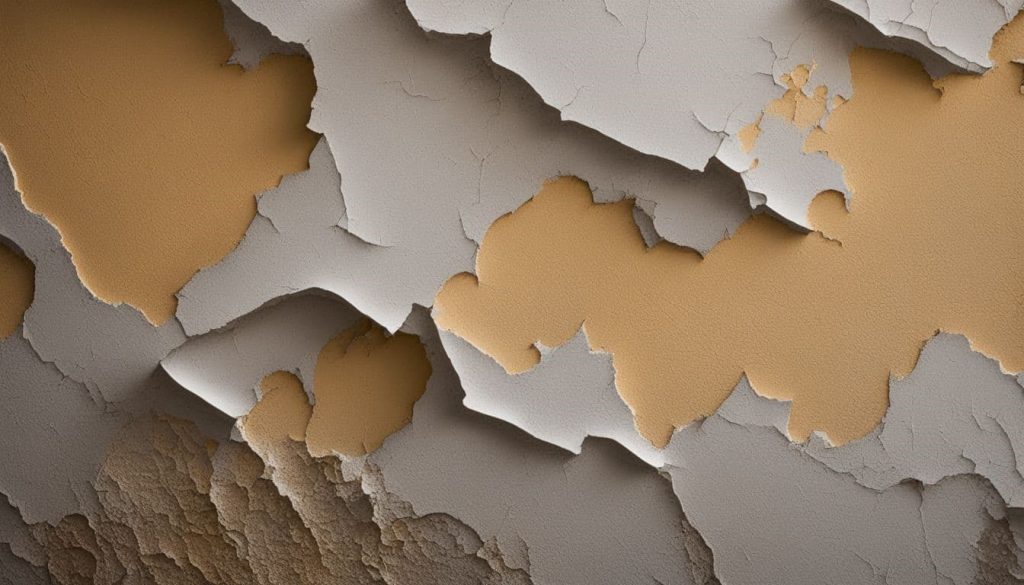
In this section, we will delve deep to uncover some potential pitfalls homeowners may encounter with EIFS Stucco such as potentially high repair costs, the risk of moisture problems if improperly installed, challenges in identifying hidden issues beneath its surface and a limited number of trained installers.
Repair costs
While EIFS Stucco undoubtedly offers several advantages, its repair costs are a potential downside. It’s significant to know that these costs can range between $30 and $50 per square foot, which is relatively higher compared to traditional stucco repairs estimated at just $8 to $20 per square foot.
This substantial difference in the cost arises due to the intricacies involved in repairing EIFS, requiring trained professionals for accurate work. Therefore, homeowners must consider this aspect while making their final decision regarding whether EIFS or traditional stucco aligns with their financial considerations and home improvement needs.
Possible moisture problems if not installed correctly
EIFS stucco requires expert installation to prevent possible moisture problems. Failure in sealing its surface during application may allow water seepage into the walls—this entrapment potentially leads to mold growth and various structural issues over time.
This material lacks natural breathability causing it to be more susceptible than most siding options when exposed to prolonged periods of high humidity or rain. Should this condition persist, homeowners can anticipate unwanted expenses for extensive repairs and maintenance down the line.
Thus, ensuring proper installation techniques such as integrating a moisture barrier is highly crucial from the get-go.
Challenges in Identifying Underlying Issues
Problems with EIFS stucco are not always immediately visible, leading to challenges in identifying underlying issues. For instance, moisture intrusion or pest infestations can be hidden behind the system’s surface and may continue unseen until they cause substantial damage.
This drawback further complicates due to EIFS being non-breathable thus more prone to retain water. Such a scenario may lead to severe injury requiring expensive repairs if undetected.
To add, customization or modification of EIFS Stucco demands particular expertise which limits installer options and increases the risk for errors during installation or repair processes.
A structural issue might arise from poor installation practices, compounding these challenges while leaving homeowners unaware of potentially escalating problems. Hence timely professional inspection becomes indispensable for early detection and preventing undesirable consequences with this type of exterior siding solution.
Limited Installer Expertise
Finding a skilled EIFS installer might prove challenging. Not every siding contractor has the expertise needed to correctly install this particular cladding system, as it requires distinct knowledge and skills.
Insufficient installer expertise can result in inadequate installation that compromises both its durability and energy efficiency potential. Problems like mold growth, pest infestations, damage to the frame and exterior parts of your home may spring up if EIFS is poorly done.
Moreover, without proficient hands for repair or customization tasks – things could get even messier with EIFS stucco than traditional alternatives. That’s why professional advice involves hiring an specifically trained and certified EIFS inspector to gauge older homes’ status especially if they’re wrapped in this type of sophisticated coating system.
Conclusion
Homeowners today lean towards EIFS stucco, charmed by its dual offering of durability and aesthetic appeal. Not only does it amplify the value of their property, but also lowers maintenance requirements in the long run.
While the initial investment may seem hefty, people understand that they are actually investing in enhanced energy efficiency and an unmistakable allure that has become a characteristic of fine architecture around neighborhoods.
In a world growing ever conscious about energy consumption and sustainability efforts, EIFS stucco certainly stands as an attractive choice among homeowners wanting to make a responsible decision for themselves and for our planet.
FAQs
1. What is the difference between EIFS and traditional stucco?
EIFS, or Exterior Insulation and Finish System, is a type of synthetic stucco that includes insulation whereas traditional stucco consists of cement applied in three coats over fiberglass mesh.
2. Why do homeowners prefer EIFS Stucco?
Homeowners may choose EIFS due to its energy efficiency, easy installation process, durability against extreme weather conditions and versatility in design options.
3. Is EIFS resistant to water damage?
Yes. A properly installed EIFS offers an effective external insulation finishing system by having a durable water-resistant barrier that helps protect your home from elements.
4. Are there any drawbacks when choosing EIFS?
When not correctly installed or maintained, poorly installed EIFs can lead to issues like potential mold growth and pest infestations but these risks can be mitigated with proper oversight during the installation.
5. How does the cost between regular and EIFs Stuccos compare?
While both types provide exterior protection for your home’s structure with the major differences being material composition,EIFS might cost more per square foot due to its complex makeup; unlike traditional stuccos made primarily from natural materials such as Portland Cement.

